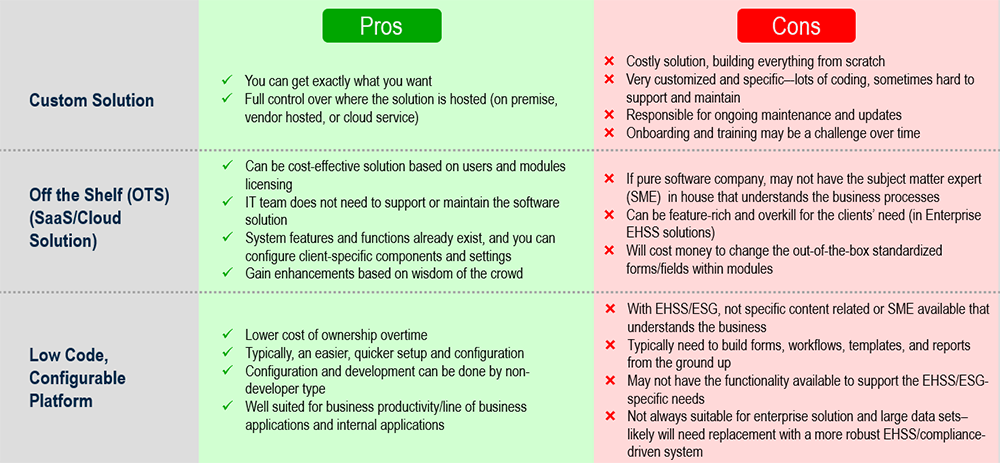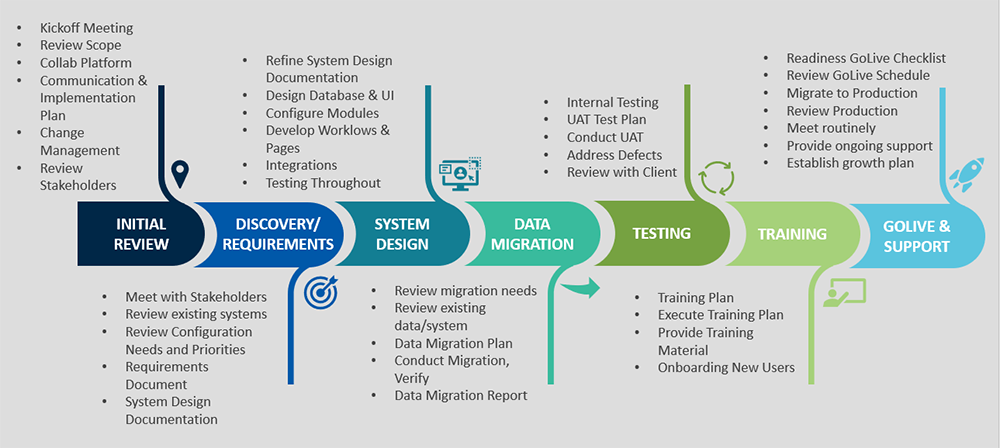The continual evolution of the regulatory landscape and the increase in regulatory obligations have had a significant impact on the demand for more efficient data capture and management practices within the environmental, health, safety, and sustainability (EHSS) and environmental, social, and governance (ESG) sectors. A direct result of these increased obligations has been the rise of adopting Environmental Management Information Systems (EMIS) platforms, which have evolved from pen and paper to integrated cloud-based software solutions that allow users to access massive amounts of data from anywhere at any time.
Watch EA’s Environmental Insights webinar to learn more. A brief summary is presented below.
EHSS/ESG Regulatory Landscape and Industry Trends
Most current major U.S. environmental statutes were passed in a timeframe from the late 1960s through the early 1980s. Since then, these laws and regulations have been amended or modified through various rulemaking and public processes, often subject to the ebb and flow of political forces.
Outside of laws and regulations, there has been unprecedented growth in voluntary and sector-based requirements—executive orders, voluntary codes, and standards such as the proposed U.S. Securities and Exchange Commission rule, which all require increased data collection, management, and reporting by reliable and easily digestible software tools. Managing this data by older methods such as pen/paper and spreadsheets are no longer feasible.
EMIS Platforms | Solutions and Process
EHSS and ESG programs rely on a massive amount of data from both direct and indirect sources. Digitization allows users to take advantage of modern technology (e.g., artificial intelligence, machine learning) to analyze data quickly and accurately, turning it into useful information that can inform and support better decision-making. Implementing an EMIS helps automate reminders and standardize reporting outputs, validate data, mitigate the effects of missing records and the loss of institutional knowledge, and navigate the existing regulatory landscape and changes.
There are several EMIS solution types to consider. Several examples and their pros and cons are discussed in the table below:

Determining which type of EMIS platform is right requires a deeper understanding of an entity’s needs, goals, and budget. A Needs Assessment, carried out internally or with the help of a third-party Business Analyst, has two phases:
- Discovery Phase—Determining the scope, identifying stakeholders, observing existing processes, and reviewing existing systems.
- Documentation and System Review Phase—Analyzing data, identifying objectives, filling data gaps, researching software vendors, and determining next steps.
Regardless of whether it is carried out in-house or by a third party, it is critical to stay customer focused. Without buy-in and support, the user will not embrace the new system no matter how well it fits their needs. The Needs Assessment should narrow the choice down to two-to-three preferred software vendors.
Software implementation should be a partnership between the client and software vendor/developer. In cases of large systems and complex platforms, it is not uncommon to hire a third-party implementation provider or specialist to interface with the vendor and moderate between the client and the vendor.
Implementation is a multi-step process that can be handled in multiple ways, including the waterfall method, Agile/Scrum or Iterative method, Phased Approach, a hybrid approach, or a Rapid Software as a Service (SaaS) implementation. The method will vary from client to client depending on their needs. The key components of a software implementation are:

When properly implemented, an EMIS platform will likely help a client simplify and save time with their regulatory compliance process by streamlining data collection, automating routine reminders and standardized reporting outputs, reducing human error and validating data, standardizing workflows and forms, centralizing reporting and tracking, and providing real-time access to data to help inform decision-making and planning for change and growth over time to meet goals and requirements.
For more information, contact:
 Jennifer Peterson, CSM, Director, Environmental, Health, and Safety Solutions Implementation
Jennifer Peterson, CSM, Director, Environmental, Health, and Safety Solutions Implementation
410-329-5121
Email Jennifer
Contact Us
